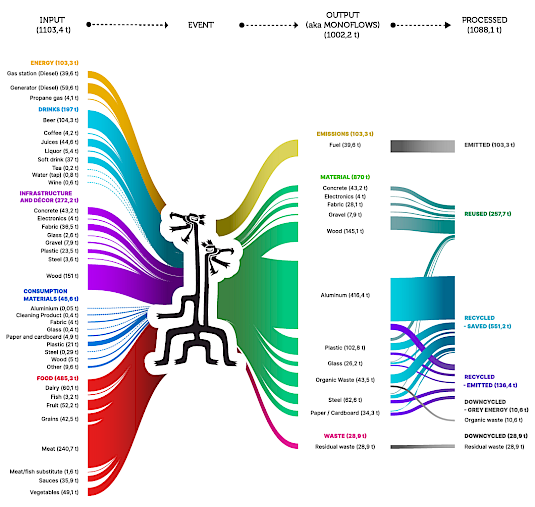Environment
CARBON MEASUREMENTS
All Materials Measured
After years of research into the best method, we found a way to measure quantitatively the carbon footprint in 2023 Boom Festival edition. This was one of the big steps towards calculating the emission of greenhouse gases into the atmosphere.
With different tools, we arrived at Mobility Footprint Analysis, that measured greenhouse gas emissions in four areas.

We also introduced the Material Flow Analysis method: a quantitative analytical approach to assess flows and stocks of materials to calculate their impact at Boom. The categories were:
- Energy
- Drinks
- Infrastructure/ Decor
- Consumption Materials
- Food

- Inputs: all products (bought or reused) at Boom 2023. Their total production emission value is 1103,4 T CO2e.
- Outputs: all materials after use at Boom, which may come as waste for recycling (ex. aluminum cans and bottles), as non-recyclable items, as materials to be saved for reuse in the next editions (ex. wood) or as emitted from combustion (generators) and digestion (people).
- Processing: the exact impact of the outputs is linked to how they are processed: some are not transformed and can be reused again - remaining in use (ex. electronics); others are lost and thus emitted (ex. diesel and residual waste); and certain outputs are transformed through recycling to keep a good portion of the material in flow for further use (ex. organic waste that is composted) - however another part is emitted during this process (ex. as composting and recycling can be seen as new production steps).
- This means that while the total emission resulting from the production of materials used to make Boom 2023 was 1103,4 T, not all is lost. Of this, 819,5 T CO2e is associated with materials that are still in cycle - either being reused, recycled or composted. 268,6 T was emitted through combustion, recycling or downcycling.


